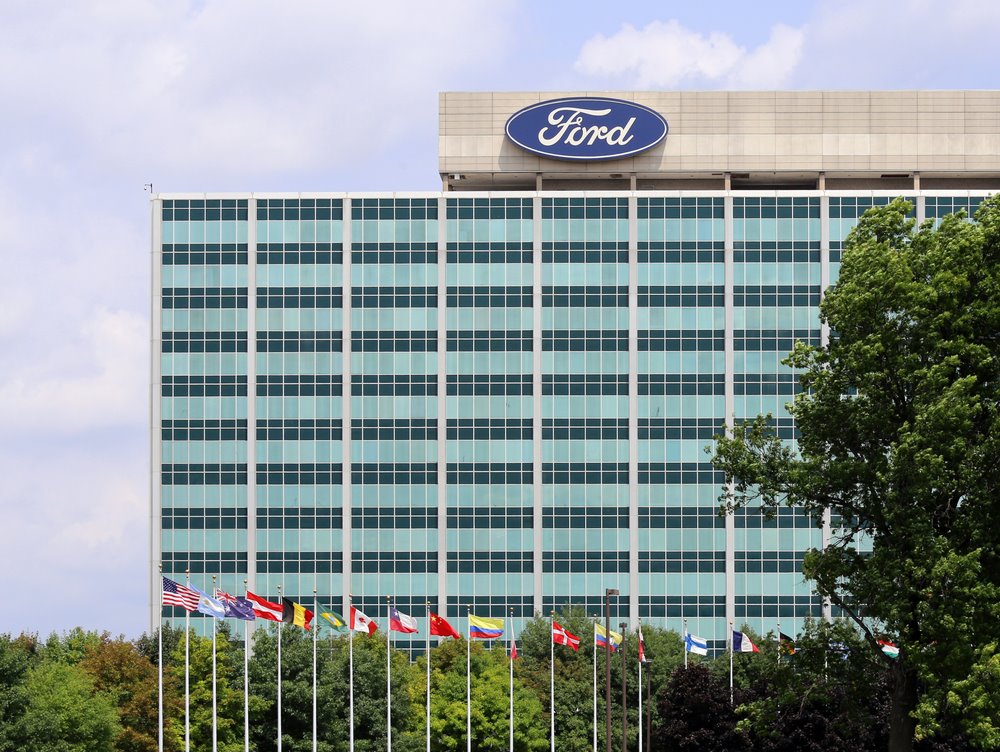 Ever notice how some CPG brands just disappear from the marketplace? One day they are in the store like they have been for years and the next, Poof! They’re history!
Ever notice how some CPG brands just disappear from the marketplace? One day they are in the store like they have been for years and the next, Poof! They’re history!
This phenomenon is usually caused by structural flaws in the Brand Architecture of the acquiring company. “What,” you may ask, “is Brand Architecture?” It’s a big word for how brands within a large enterprise company with many brands are sorted, organized, prioritized and positioned. It is where a brand fit into an established brand management structure. It’s also about the strategy behind those positioning decisions. Typically, large brand holding companies want to have a brand offering for every price point in every category.
New brand builders usually have one brand at one price point in one category. They put their one and only brand on a pedestal. No internal positioning here. Just the one brand in most cases. Brand building is so difficult, new brand builders really have no choice but to focus on their one and only brand.
It’s when they are successful, become an acquisition target, and get acquired, that brand architecture becomes a big factor in the survival of their former brand. The brand architecture of their acquirer, that is.
What division are they going to put it in, in their portfolio of brands? How are they going to position the brand, or more likely, reposition it? And what will be the effect on the brand’s growth, sales, and sustainability?
The good news about small consumer brand builders is that they are risk tolerant, have tenacity, and are willing to do the missionary works to gain traction with their new brand. The bad news is that they often underestimate the true cost of sales and cannot service what they’ve sold. Thus, scaling is quite a challenge. It’s actually where most new brands fail.
The good news for new consumer brand builders is that large consumer brand holding companies tend to be risk adverse and have to buy many of their new brands. They can scale better and faster than most small producers. They have efficiencies of scale, lots of money, and have control of the distribution system. As we like to say, “They can milk the cow, but can’t raise the calf!” The bad news is that big companies tend to be ridged in their approach to brand architecture.
Newly acquired brands must fit into their existing brand architecture. Also, because of their siloed and pyramid structures, specialization of labor, and resulting isolation and insulation from sales, they tend to attract career builders who want to put their mark on every new brand. Sometimes they even “fix it when it ain’t broke”. Then, Poof! Right?
So, to really understand Brand Architecture, think of an umbrella with a brand name (the corporate brand). Then, under that, several other smaller umbrellas that define the categories of the brands under them, like premium, popular, and budget brands. Then, under those divisions, brands that fit those descriptions. Then under each of those, add piggyback brands that are spinoffs or non-profit brands whose whole purpose is to support the brand to which they are associated.
Whew! Now that’s structure. That’s architecture. And it can get so rigid that newly acquired brands are forced into the existing structure, sometimes like a trying to hammer a square peg into a round hole. Sometimes the very reason for the brand’s initial success is lost because the big company doesn’t view the market the way the original brand builder did.
Many new brands are successful because they gain traction by defining the market differently. What happens when the big guy tries to fit that same brand into their more conventional definition of the market, the one where they were losing relevancy, the one where the new brand builder saw the opportunity? Poof! Or at least Fizzle!
We like to say, “Brands aren’t killed by the competition. They die from self-inflicted wounds!” Let’s look at some examples of how good brands die after they are acquired.
1. Exceeding the “Brand Width”
Like bandwidth in radio frequencies, brand width can be exceeded. Large companies tend to see how many SKU’s they can squeeze out of a brand. They like to do this because retailers are much more likely to “extend the line,” rather than to “place a new brand.”
The thinking goes, “With already proven sales by a brand, why not see how many new items that brand will support and thereby control more shelf space?” The problem is that the original brand distinguished itself by focusing on a few items that it specialized in. Now it can come an “also ran” with the dilution of its original brand message. Now it can be knocked off by a new brand that specializes and over delivers in just one or two items in the category.
The B2B brand architecture can also result in brand death by lack of focus and falling through the cracks. When a big corporation works with a distributor in a specific territory, for instance, they work with and depend upon, sales representatives and retail partners who have a limited mindshare. They can only focus on so many brands at a time.
When the original brand builder had the brand, it was an independent offering with a single owner right behind it. It specialized in one area of the market. It gave the B2B reps personalized attention, it was not part of a larger portfolio of brands. It was not just one of the tons of brands the big corporation was pushing. Now it’s no longer an entity on its own. Now it must fight for mind share within the corporate umbrella’s B2B brand architecture.
2. Standardizing
 Sometimes the big guys take efficiencies of scale too far. They usually develop a strategy that is flawed by its basic assumptions. Our favorite is the one where the fiscal officer comes up with a brilliant idea to save money by standardizing the brand and trying to make it feel like the others in the portfolio. One type of color scheme, same font, uniform packaging, and the like.
Sometimes the big guys take efficiencies of scale too far. They usually develop a strategy that is flawed by its basic assumptions. Our favorite is the one where the fiscal officer comes up with a brilliant idea to save money by standardizing the brand and trying to make it feel like the others in the portfolio. One type of color scheme, same font, uniform packaging, and the like.
It’s usually supported by such claims as “Why, just look at how much money we will save by simplifying (or cheapening) the package, quality queues, or product. At the current level of sales, and the current rate of growth, we’ll save $200, 000 per year! There’s no need to waste money on the specialties the original brand builder used. The market won’t notice.”
What makes them think that the current level of sales or the current rate of growth will continue with a lower quality product. Consumers can tell when their favorite brand has been standardized to fit into a corporate brand architecture.
Sometimes the original brand builder was an outsider, not prejudiced by industry standards. Sometimes it is just this form of disruption that distinguished the brand in the first place. Standardization can hurt that distinction and ultimately the brand itself.
3. Cannibalization
Because retail shelf space is so limited, exceeding brand width can lead retailer to say, “OK We’ll put in your new SKU, but which on of your approved items do you want me to discontinue?”
This not only happens with items within the same brand, but it can happen to a family of different brands owned by the same corporation or represented by the same distributor. A new brand can cannibalize an existing brand in the same corporate family.
Now that the original brand is part of a bigger portfolio, it can become cannibalized by temporary price reductions to a competing member of the same family of brands. It can become lost in the shuffle when some new acquisition gets all the attention.
A more sinister form of brand death is when a brand is deliberately purchased because it was competing with one of the acquirer’s existing brands and they wanted to take it out of the market. Or they wanted to prevent their competition from getting it and growing it at their expense.
4. Corporate Ego
Some corporations want to see their corporate brand name on every brand they acquire. They want to see their company or family name out there. They see an acquisition as a way of expanding their empire.
But that can backfire when the market perceives the parent brand as nothing special, ordinary, or worse, inferior. This is especially true when a corporate brand, known over years or decades for its budget items, acquires an upscale brand and puts its corporate name on it. Sometimes it’s better to maintain a low profile than to confuse or discourage loyal customers of the original brand.
Also, as mentioned earlier, the brand managers and marketing people within the large corporation can feel obligated to change or “‘improve” the newly acquired brand. They may be only using their relatively short tenure at the big corporation as one more stepping stone in their career ladder.
So, for them, this is their opportunity to make their mark on a well-known brand. They can brag it up to their next boss. Most will be gone before any negative effects of their “improvements” are felt anyway.
Transitional marketing people can be inadvertently reckless and underestimate what it took just to get the brand to where it is now. It takes more time, energy, and risk to start a brand, go through the missionary period, overcome the momentum and achieve traction, than it does to scale an already established market proven brand.
5. Repositioning
Probably the biggest reason we see for brand demise is repositioning. In an attempt to round out the acquiring company’s brand architecture, acquired brands may be repositioned to fill a void in the company’s range – either higher or lower than the original brand builder positioned it. This can confuse an already overcrowded market.
It takes years to establish a market position using all the brand positioning tools such as pricing, packaging, labeling, logo, and catch phrasing. Once the market finally gets it, it’s a beautiful thing. They know, for instance, right where to get it at their store. They know what it looks like, they know what to expect in terms of quality and price. It’s dependable, recognizable, and accessible.
Then, all of a sudden, it’s gone! It’s in a new category, its got a new label, and it’s at a new price! You may as well start all over again. Many corporate marketing folks, especially, the ones right out of school, have never actually built a brand from scratch before but they are in a position to wreck one! They have theoretical education and know all the latest buzzwords, but have never had to pound the pavement with a new, unproven brand and try to make it stick.
They may think the brand has enough market traction to withstand a rebranding program. But usually they are playing to a new and different audience, and that traction may not transfer. We like to say, “When it comes to repositioning, use evolution, not revolution.” Don’t confuse the customer!
Once the corporate staff gets so compartmentalized that it become isolated and insulated from sales, its easy to think that the company “owns” the brand, that the company can do whatever it wants with the brand, and that the brand message, position, and image can be dictated from the company down to the consumer.
But as any salesperson, or customer service person will tell you, it’s really the other way around. The customers ‘own’ the brand. It is their perception of, and experience with, the brand that drives their decision to buy. Brand architecture is the last thing on their mind. It’s a derivation of brand management convenience and organizational structure. It might make the corporate folk’s job easier, but it should not ever be at the expense of the consumer …or POOF!


